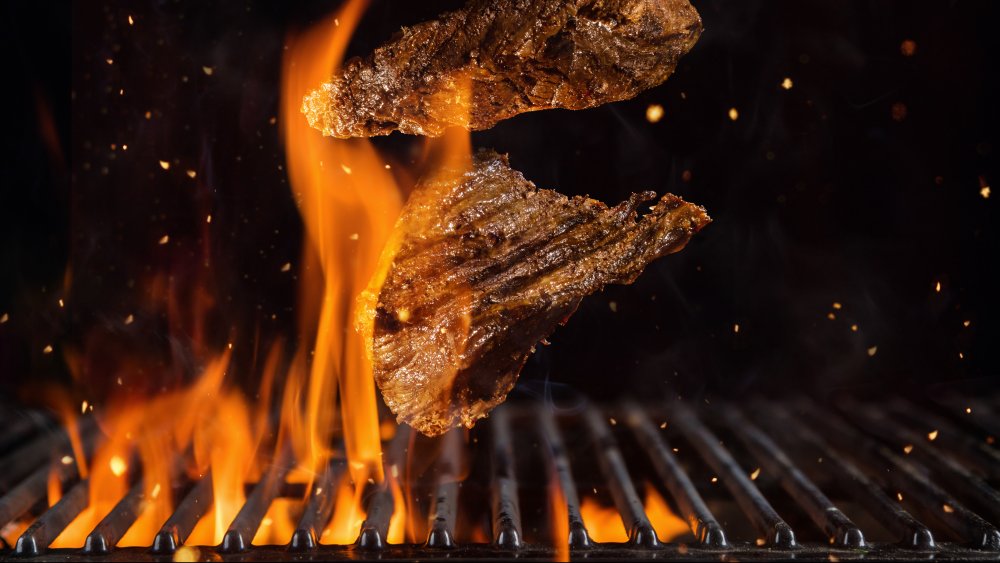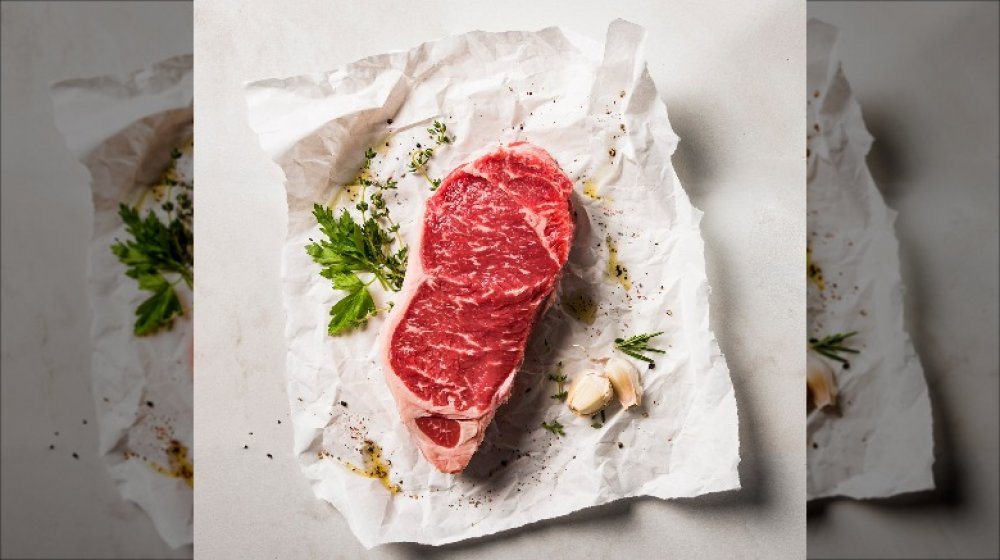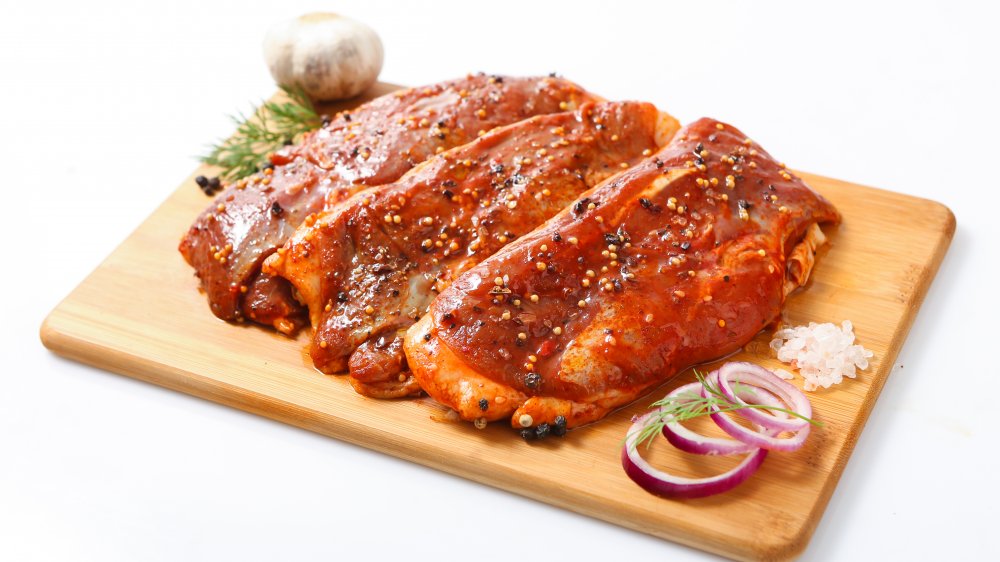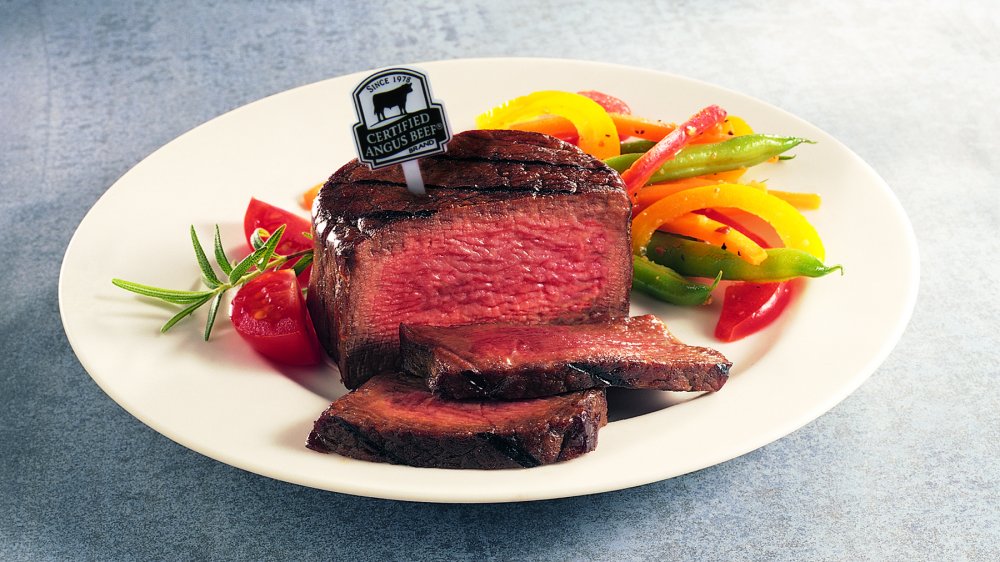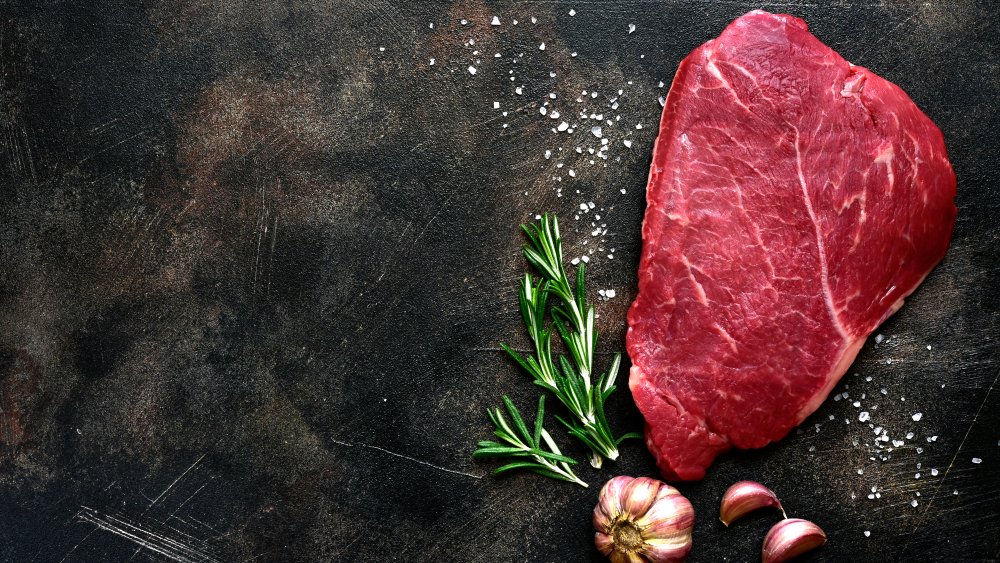Chef Breaks Down The Worst Way To Cook A Steak
There are few kitchen disasters (short of setting the place on fire) that are quite as bad as when you've invested some serious bucks in a pricey piece of steak and you still somehow manage to screw up the cooking and turn it into an incredible, inedible mess. While botching a batch of snickerdoodles can be an annoyance, incinerating a $40 filet mignon is more of a heartbreak; in fact, it's a darn-near tragedy.
Luckily, there are all kinds of tips and tricks to help you make the most of your meat, as well as a long list of warnings as to what cooking mistakes you should make sure to avoid. In order to help with the latter, we spoke with a chef who specializes in all things beef. According to Michael Ollier, senior corporate chef for the Certified Angus Beef ® brand, here are all the things you should not be doing when you're cooking a steak.
Choosing too thin of a cut
Ollier says that when it comes to steaks that come out perfectly cooked every time, thicker is definitely better. As he puts it, "Choosing a thicker cut helps you obtain that perfect crust without overcooking your steak. Thinner steaks will get too well done before you are able to create that perfect flavorful crust on the exterior." While not all cuts of steak will necessarily allow this, Ollier's recommendation is that you try to find steaks that are at least 1 to 1 1/2 inches thick whenever it is at all possible to do so.
Cooking your steak while it's wet
Ollier warns that if there is any excess moisture on your steak while it is cooking, this will create steam. He notes that this will prevent you from giving your steak a good sear, and in turn, you won't get that flavorful crust you're looking for.
In order to avoid this moisture-steam thing, Ollier advises patting your steak dry prior to cooking — he doesn't say what you should be patting it with, but we're going to go out on a limb here and assume that the ever-useful paper towel will do. He then says to brush the steak with a light coating of high-temperature oil (vegetable, grapeseed, peanut or safflower are all types of cooking oil that can withstand high heat) before sprinkling on your chosen seasoning.
Turning your steak too often
No-one likes a flip-flopper, especially when it comes to cooking. Steaks, particularly, do not respond well to being messed around with too often while they're cooking. Ollier counsels "patience for perfection," saying you should allow your steaks to sear on one side before you flip them to the other side.
How will you know when a side's properly seared? According to Ollier, "Steaks should lift easily from the grill grates before moving them. If they resist, give them a little longer and try again." Oh, and you should also forego cutting into your steak to test for doneness. Instead, Ollier urges using an instant-read thermometer. Not only are these more accurate, but they're also less apt to "disturb the integrity of your steaks," which almost sounds downright immoral, so is definitely something to avoid.
Cooking your steaks at room temperature
While Ollier admits that there is little evidence that allowing your steaks to reach room temperature before cooking will actually impair the flavor, there likewise isn't any proof to suggest that they'll be improved by so doing. He says that despite the advice that is offered on numerous cooking sites, warmed-up steaks won't cook faster or more evenly, but that allowing uncooked meat to spend a significant time out of the refrigerator can pose a food safety risk. Instead, Ollier and the rest of the gang at Certified Angus Beef says, "We recommend taking steaks from the fridge directly to the grill, with just a quick pit stop for seasoning if needed."
